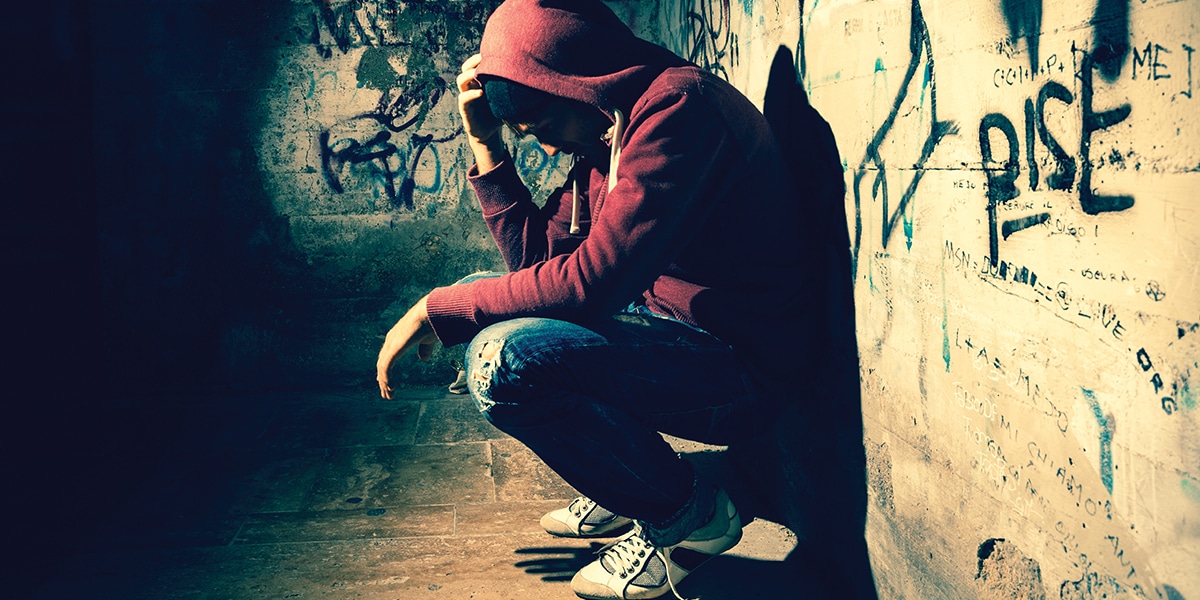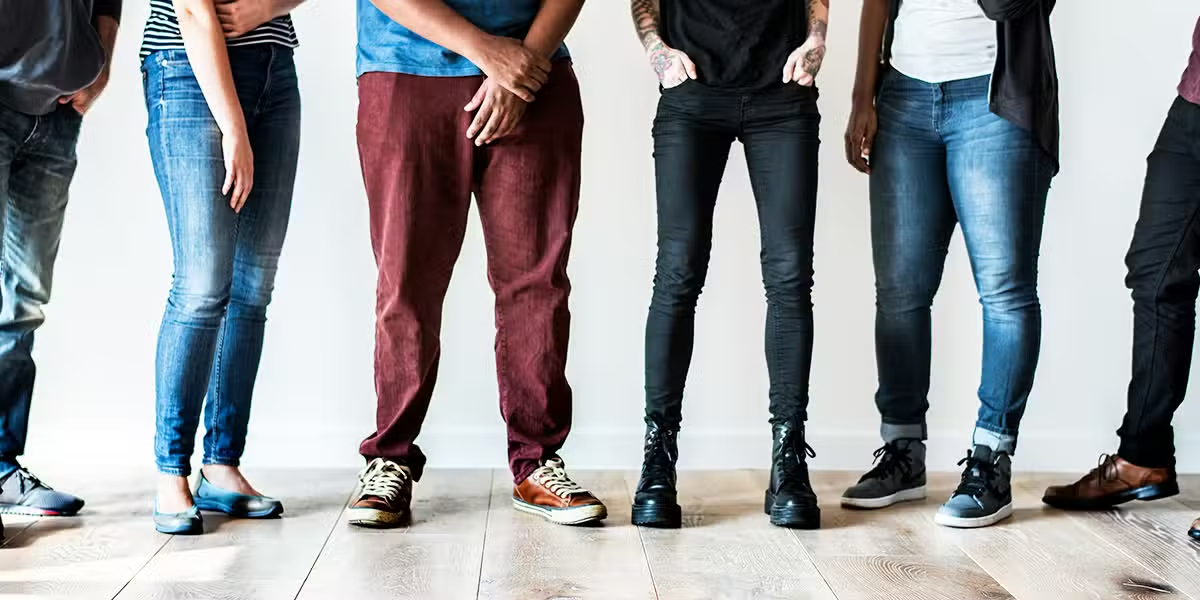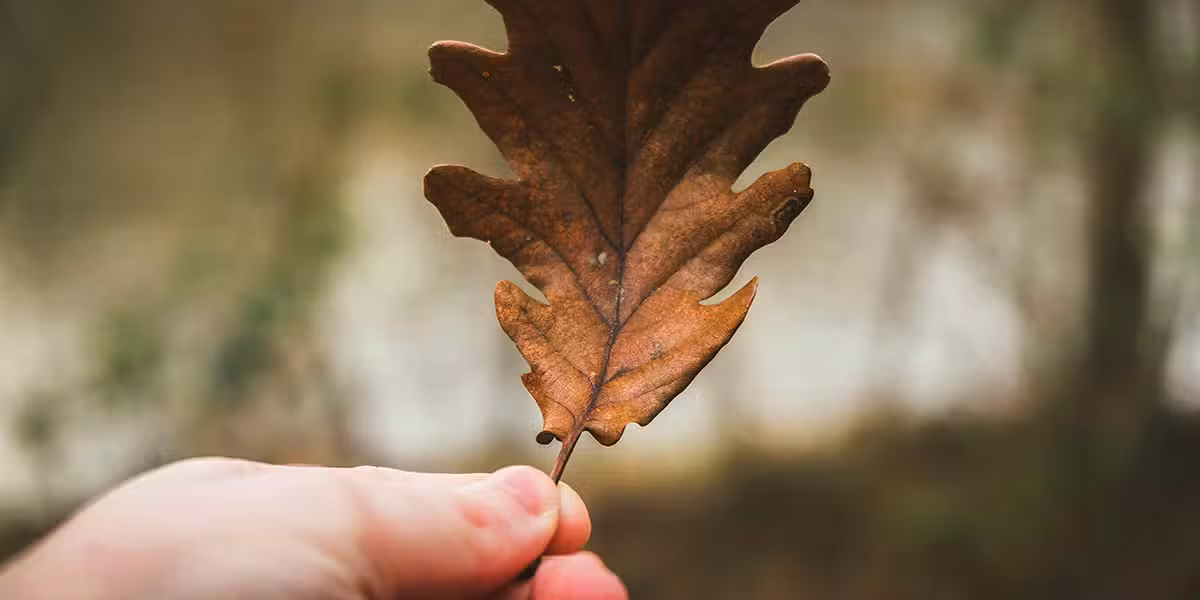Young people have never been more connected or more isolated. A psychologist and a teen advocate for suicide prevention shed light on this crisis.
On a chilly January morning in 1991, Jeremy Delle, 15, walked in late to a packed English class in Richardson, Texas, with a .357 Magnum in hand. After muttering a sarcastic remark to his teacher, he put the gun in his mouth and pulled the trigger.
Fellow classmates, postmortem, described Delle as quiet and withdrawn. His suicide might have become a footnote if not for a fledgling Seattle rock band called Pearl Jam, who captured Delle’s tragic death in their 1992 song “Jeremy,” a blistering ode to adolescent angst. And while teen suicide is not a ’90s construct, Pearl Jam’s song illuminated this crisis for a generation.
Adolescence is designed to be difficult. But in an era of smartphones and hyperconnectivity, it’s much harder. According to a 2019 study by YouGov, a global public opinion and data company, one in five teenagers spends at least four hours online every day. Young adults, we’re learning, have never been more connected or more isolated.
Some teens in crisis, like Nathaniel Hassan, explicitly use social media to broadcast their pain—and their plans. In 2016, the 18-year-old posted a suicide announcement video on his Instagram account, which was seen by 15,000 people, many of whom offered support. But those messages went unacknowledged. Shortly after posting his video, Hassan walked into a wooded area in Mandeville, Louisiana, and ended his life.
It’s impossible not to compare the spike in depression among young adults and the parallel rise in social media use. This often toxic cocktail, in fact, has been closely monitored for years. According to a 2017 study released by the American Psychological Association (APA), between 2009 and 2017, depression rates increased to more than 60 percent for teens 14 to 17. The report also found that the increased use of digital media “may have changed modes of social interaction enough to affect mood disorders and suicide-related outcomes.”
The APA’s study also noted the dangers for teens who choose virtual interactions over actual ones. “Individuals who spend more time on social media and less time with others face-to-face report lower well-being and are more likely to be depressed.”
The study concluded that “more US adolescents and young adults in the late 2010s (vs. the mid-2000s) experienced serious psychological distress, major depression, and suicidal thoughts, and more attempted suicide and took their own lives.”
Know the Signs
Parents of teenagers should know this: Social media can be dangerous. The psychological damage it can inflict, studies show, can be deadly. Richard Patterson, PhD, a clinical psychologist and trauma therapist working in El Paso, Texas, believes that adults have a greater role to play in how young people interact on the digital landscape, as does the Catholic Church.
“I believe parents need to stand up here, place limits, have passwords, and check on their child’s history on the Internet,” Patterson tells St. Anthony Messenger. “But I also think the Church can help by offering classes and guidance on the ethical use of social media.”
But Patterson feels that there are greater forces at play here than Instagram and TikTok. Young people, especially in the LGBTQ community, battle undercurrents of stress and aggression that seasoned adults cannot understand.
“The amount of pressure on teens is worrisome. I see 17-year-olds who believe they need to figure out what to do with the rest of their lives,” he says. “I see teens under great pressure regarding sexuality and sexual identity. And I see a lot of teens who are spiritually lost with no sense of meaning in their lives.”
It’s important to address some of the myths surrounding suicide. These include the notion that talking to at-risk teens about suicide is dangerous (the opposite is true); irresponsible or excessive media coverage is not detrimental to teens contemplating suicide (it is); and failed suicide attempts usually signal an end to suicidal ideation (sadly, no).
Knowing the warning signs is also critical. According to the National Suicide Prevention Lifeline, the following behavioral patterns should be monitored:
- talking about wanting to die or to kill themselves;
- increased use of alcohol or drugs;
- reckless behavior;
- sleeping too little or too much;
- withdrawing themselves; and
- extreme mood swings.
The trick is to pay attention, assess the situation, and listen without judgment, something Patterson challenges adults to do regularly. “There needs to be a forum where teens can voice their doubts and struggles without fear of judgment,” he says. “Parents, school counselors, coaches, and pastors—any adult whom they believe will listen.”
In that spirit of listening to teens’ joys and struggles, the following testimony is penned by Rory Shelton, 16, whose life was upended by the suicide of her friend Ben.
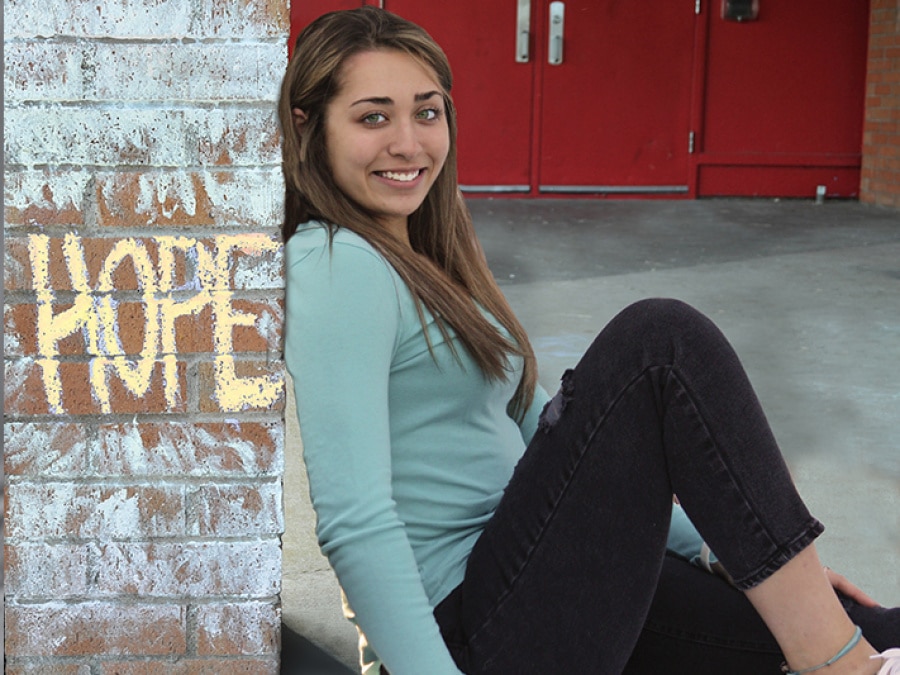
‘Hi, I’m Rory’
They say you don’t know what you really have until it’s gone. In my case, I knew what I had—I just never thought I would lose it. Hi, I’m Rory. I will be starting my junior year in the fall at a high school in the Midwest. And this is my story.
It was a Monday morning, March 18, 2019. I had just gotten back from a volleyball tournament in St. Louis the night before. I remember waking up still smiling about our exciting first-place finish. I was ready for the week ahead. Little did I know what had actually gone on that morning.
I remember getting to school. First period was great—we had just learned some new math. When I got to my next bell, history, my friend received a phone call from her mom telling us that Ben, my first real friend, had taken his life. I remember thinking, No, this can’t be real—it’s fake. I wasn’t able to wrap my mind around it. I remember walking out of the classroom, crying hysterically. I can’t express the kinds of thoughts that swirled around in my head. I felt confusion, hopelessness, loss, pain—many different feelings that no teenager should have to go through.
I walked out of school that day, knowing that I would never see Ben ever again. I thought about how he would never laugh, cry, party, graduate, or live life the way teenagers are supposed to. The pain I felt, and still feel, is the worst I have ever had to cope with. It’s been over a year without my first friend, my best friend, my companion. I miss Ben every day.
Hope and Healing
I participate in an organization called Hope Squad, a nationwide, school-based, peer-to-peer suicide prevention program, which focuses on prevention, intervention, and postvention. I participate in this program with about 30 other kids from the 10th to 12th grades. I was chosen to represent my class from all of my peers. We meet every other Wednesday and talk about how we can help the people around us with simple gestures, such as smiling at someone in the hallway and writing letters to other students. We also have exercises to help us learn the warning signs of people who might be thinking of harming themselves.
I love coming together to focus on mental health and helping people one day at a time. I especially enjoy the role-playing activities we participate in. It helps to identify some of the more subtle warning signs a student may be exhibiting. We have learned specific signs like giving away possessions, formerly outgoing students becoming withdrawn, and self-injuring. We have also learned to identify verbal warnings such as “Nothing matters” and “I don’t want to be here anymore.”
Personally, I see the drama and the hate unfold daily. I’ve seen other students ridiculed on social media. I myself have been called a despicable word on Instagram, which hurt. For those teenagers who are not mentally equipped to deal with it, this can cause trauma.
I, too, go through many daily struggles. Sometimes they are large, like the pain I feel without Ben. Sometimes they are just me being a teenage girl and worrying about things like my appearance, homework, volleyball, and grades. I know I am still young, but I’ve had my share of good times and bad.
The hardships that I have experienced in my 16 years have caused emotions most teenagers never have to go through. Ben’s suicide caused a devastating sense of loss that I think about daily.
Social media allows all of this to be shared instantly, which is good and bad. It’s great to be able to share and view accomplishments, triumphs, wins, and good news with this technology. Social media also allows much easier identification of at-risk people who may be struggling. I’ve witnessed cries for help on social media—and we have been trained in Hope Squad to notify an adult immediately. It could be a teacher, parent, or counselor. I have done this myself.
Before social media, no one may have ever known, causing delayed intervention. Conversely, social media also allows you to witness many acts of abuse and hate.
I never thought I would be the one to experience this feeling—that of losing a close friend—but I have learned that other people who have gone through it grieve differently. Some do not outwardly show emotions and instead keep their pain to themselves. Some people, like me, feel more comfort being around my family and friends and talking about my grief and letting it out. Experiencing these emotions at such a young age has given me the privilege to help others who have gone through the same things.
I’ve learned a lot in the last year. I was forced to quickly learn how to cope with tragedy at 15. I’ve learned how to help others cope with death, suicide, and loss. I miss Ben every day of my life, but I hope to use what I’ve learned to help prevent this in the future. —Rory Shelton
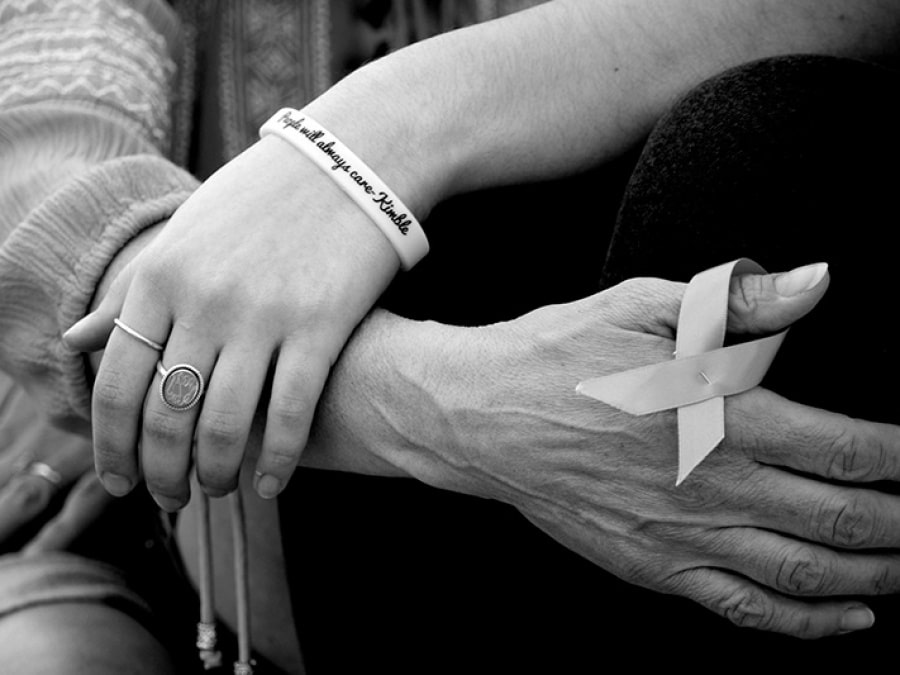
The Longest Road
Rory and Hope Squad, surely on the front lines of this crisis, have their work cut out for them: The American Association of Suicidology lists suicide as the second leading cause of death among 15- to 34-year-olds and the 10th overall leading cause of death in the United States. Patterson is a member of this organization. In his work, which includes counseling people of various age groups and social backgrounds, he sees a common thread woven through nearly every story: the loss of hope.
“My bottom line on the epidemic of suicide among teens, among veterans, even among the elderly is that we are facing a crisis of hope,” he says. “Many people are feeling overwhelmed and do not find faith to be a consolation. My task as a therapist is, first and foremost, to help them find hope.”
Those who have lost a loved one to suicide have a difficult road ahead. Patterson understands this firsthand. “Survivors of suicide—be they family or friends—have a long journey of their own, fraught with unanswered questions,” he says. “I’ve lost three active clients to suicide. They will be challenging me the rest of my days.”
Sidebar: The Power of Peer Groups
Parenting is tough. But parents of children in the throes of suicidal crises face a wholly different struggle. Psychologist Dr. Richard Patterson offers some faith-based strategies to help teens at risk.
“Youth groups are a key here, but they need to be structured in such a way that teens can safely explore their questions, doubts, and struggles,” he says. “Many of the teens I deal with struggle with questions and doubts but do not feel free to explore those in a nonjudgmental context. Churches need to acknowledge and address that suicide has a spiritual component.”
Dr. Patterson offers these suggestions to parishes:
- Each parish should establish a relationship with a local mental health professional.
- That professional provides two training sessions on identifying teens at risk. One session would be for parents, the other for all parish personnel working with teens (youth groups, Confirmation classes, etc.). Both trainings would also provide procedures for getting help.
- A third session should be provided to teens. This would focus on what to do if your friend tells you he/she is suicidal. This comes up a lot, especially through social media. Often, a friend is the first to know.
If someone you know is suicidal, call the National Suicide Prevention Lifeline at 1-800-273-8255.


